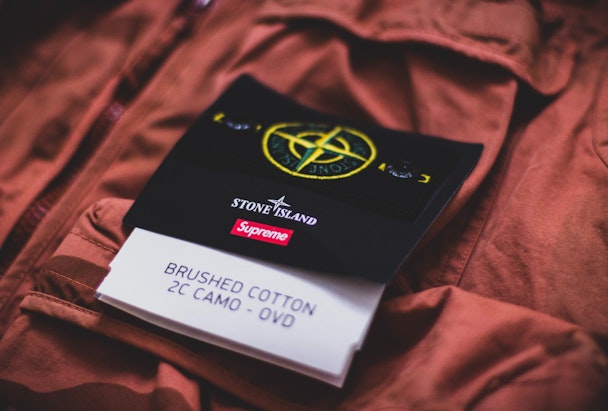Brands are the new bands: music, logos and semiotics for marketers
Among hand-wringing that mass culture is gone, replaced by tailored feeds and tiny niches, gen Z culture expert Luke Hodson makes a compelling case for brands as the new universal cultural signifiers.

Are brands the new bands? / Junior Samson via Unsplash
In the 80s and 90s, bands, artists, music genres and sounds were the primary vehicle for projecting youth identity. Today, brand logos have become the no.1 signifier of self, status, collective identity and cultural ideology, driven by the status economy.
Part of human nature is communicating through iconography and cultural symbolism. This behavior goes back as long as humans have existed. Symbol and non-material cultures have long been studied in ancient civilizations: the Egyptians using hieroglyphics, the Aztec pictograms and the Mayans pictorial phonetic signs.
Humans use and seek artistic symbology with ascribed meanings for shorthand signals that tell stories, communicate deep meaning, share wisdom, and engender tribalism.
Advertisement
The semiotics of brand recognition
This practice of injecting shapes, colors, and pictograms with cultural meaning has created a rich tapestry of symbolism throughout human history. This innate behavior has extended to the brand world through cultural appropriation and brand efforts. Brands today aim to harness the power of semiotics, instilling cultural meaning and product attributes into highly recognizable and easily understood logos that express their brand essence.
Processing visual language is a far more efficient way of communicating meaning compared with most alternatives. As young people are desensitized to brand messaging, lost in a myriad of white noise, they search for trusted and familiar symbols to help navigate through kidulthood.
Hungry walking down London’s Stratford high street, I’m not looking for the word ‘food’, I’m looking for the familiar face of Colonel Sanders' cartoonized silhouette: KFC. Equally, walking into a club, a person wearing the iconic wind rose compass embroidered on a black boiled wool rectangle badge (Stone Island) is likely someone I'll have similar cultural interests with.
Brand logos not only allow consumers to make rapid assessments of a product or service's perceived quality and value; they also enable people to decode a person's cultural standing in the world.
Advertisement
Bigger than The Beatles?
Music historically has been the primary cultural signifier for projecting your chosen identity alongside associated music culture style aesthetics. A yellow squiggly smiley face with crossed-out eyes (Nirvana), ripped baggy jeans, layered garments and canvas sneakers was an efficient visual cue to showcase you were a grunge culture insider.
Cultural signaling through music and associated merch was an effective way of patching your identity; music was fiercely tribalistic and identity-defining. You were either a punk, grunge, raver or hip-hop head. But, as music preferences have become more fluid following the iPod shuffle generation, we’ve found that brands are the new bands.
Today, brands (much like bands in previous years) enjoy a cult following, diehard fanship and a fanatical customer base. Brands are the easiest way to convey your position within the cultural landscape. This explains high levels of conspicuous consumption among gen Z, and, when paired with the heavy influence of the aspiration economy on young people, why new luxury is so desirable.
Brand iconography demonstrates your values, cultural preferences, and ideology. Walking down the street wearing a KITH hoodie, Carhartt jeans, and a pair of Jordan One retro red toe high tops clearly expresses your affinity with street culture. Equally, wearing a Nike tech tracksuit with a Moncler jacket and fresh pair of air force ones stipulates you're a native of inner-city street culture.
Before brand managers pat themselves on the back, it's important to note a brand's logo’s cultural currency often doesn't come from the brand. Rather, it is appropriated and powered by the streets and youth culture movements who build the brand’s cultural context, charging the brand’s cultural cache through sub-cultural equity. A brand’s becoming a cult brand is down to the people.
Suggested newsletters for you
Content by The Drum Network member:

NERDS Collective
NERDS Collective was founded by Luke Hodson In 2013 as a specialist agency that places brands at the frontline of street culture through hyper-nuanced consumer insights,...
Find out more
